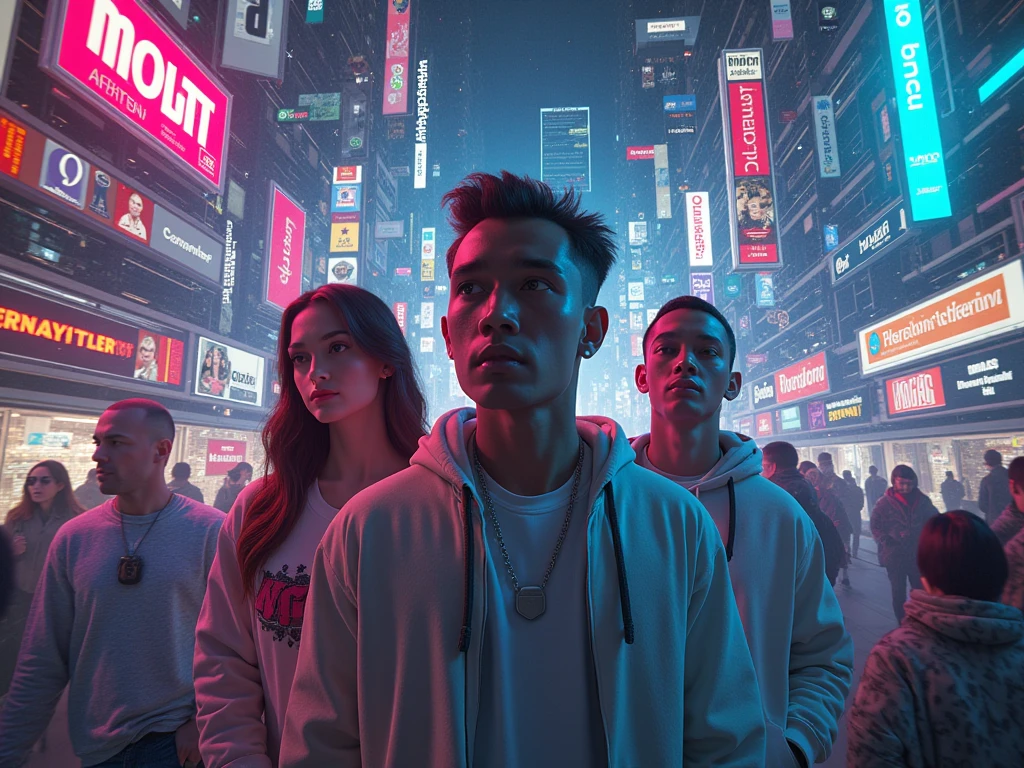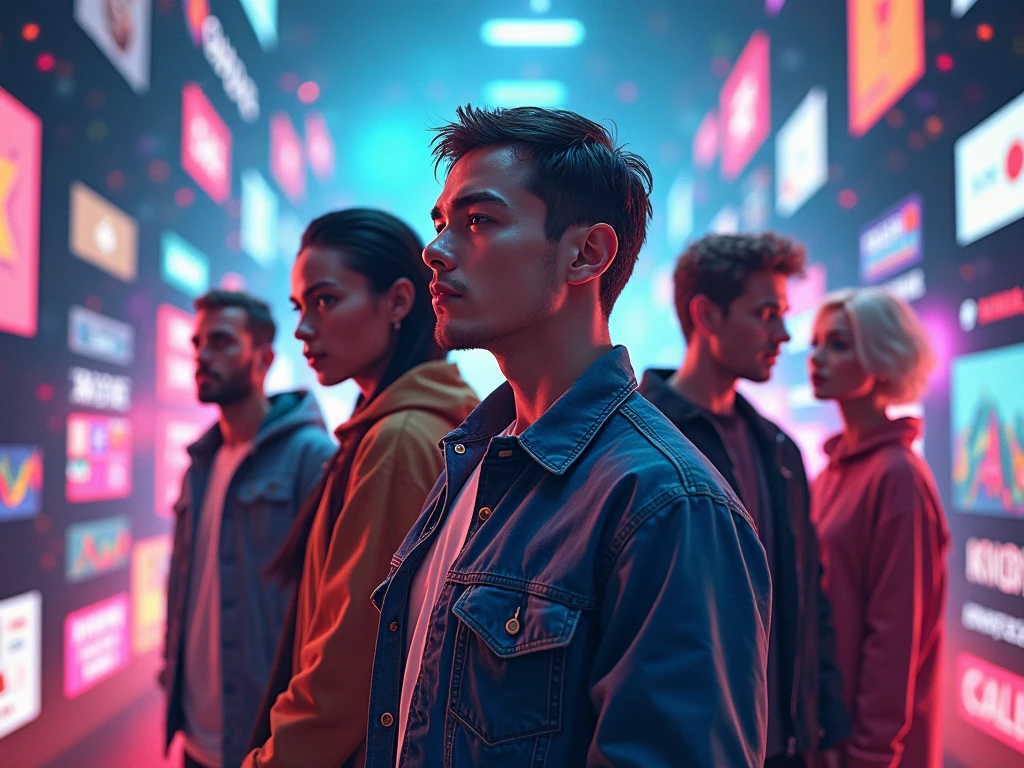In the past decade, social media has transformed the way we communicate, consume content, and make purchasing decisions. At the heart of this transformation are social media influencers—individuals who have built large followings by sharing their lives, expertise, and opinions online. These influencers have become powerful trendsetters, shaping everything from fashion and beauty to fitness and travel. In this article, we’ll explore the rise of social media influencers, the trends they’ve popularized, and their impact on culture and commerce.
The Rise of Social Media Influencers
What is a Social Media Influencer?
A social media influencer is someone who has established credibility and a large following on platforms like Instagram, TikTok, YouTube, and Twitter. They use their platforms to share content, engage with their audience, and collaborate with brands to promote products or services.
The Evolution of Influencers
The concept of influencing isn’t new—celebrities and public figures have long been used to endorse products. However, the rise of social media has democratized influence, allowing everyday people to build their own platforms and become influencers. This shift has given rise to micro-influencers (those with smaller, niche audiences) and macro-influencers (those with millions of followers).
Why Influencers Matter
Influencers matter because they have the ability to connect with their audiences on a personal level. Unlike traditional celebrities, influencers often share their daily lives, struggles, and successes, making them relatable and trustworthy. This authenticity has made them powerful voices in shaping trends and consumer behavior.
Key Platforms for Influencers
1. Instagram
Instagram is one of the most popular platforms for influencers, particularly in the fashion, beauty, and lifestyle niches. Its visual nature makes it ideal for sharing photos, videos, and stories.
Trend: Instagram Reels, short-form videos that compete with TikTok, have become a key feature for influencers.
2. TikTok
TikTok has taken the world by storm, especially among younger audiences. Its algorithm-driven content discovery has allowed influencers to go viral quickly.
Trend: Dance challenges, lip-syncing, and comedic skits are popular formats on TikTok.
3. YouTube
YouTube remains a dominant platform for long-form content, such as vlogs, tutorials, and reviews. Influencers on YouTube often have highly engaged audiences.
Trend: “A Day in the Life” vlogs and behind-the-scenes content are popular on YouTube.
4. Twitter
Twitter is a platform for real-time conversations and trending topics. Influencers on Twitter often share opinions, engage in debates, and amplify social causes.
Trend: Threads and tweetstorms are common formats for sharing in-depth thoughts.
5. Pinterest
Pinterest is a visual discovery platform where influencers share inspiration for home decor, fashion, and recipes.
Trend: DIY projects and mood boards are popular on Pinterest.


Trends Popularized by Social Media Influencers
1. Fashion Trends
Influencers have become the new fashion icons, setting trends that are quickly adopted by their followers. From oversized blazers to cottagecore dresses, influencers have a significant impact on what’s in style.
Example: The “quiet luxury” trend, characterized by minimalist, high-quality pieces, was popularized by influencers like Hailey Bieber.
2. Beauty Trends
Beauty influencers have revolutionized the cosmetics industry, introducing trends like contouring, glass skin, and bold eyeliner.
Example: The “clean girl” aesthetic, featuring natural makeup and slicked-back hair, gained traction on TikTok.
3. Fitness and Wellness
Fitness influencers have inspired millions to prioritize health and wellness. Trends like home workouts, yoga, and intermittent fasting have been popularized through social media.
Example: Chloe Ting’s workout challenges went viral on YouTube and TikTok.
4. Food and Drink
Food influencers have made cooking and dining more accessible and exciting. Trends like charcuterie boards, Dalgona coffee, and plant-based diets have taken off thanks to social media.
Example: The “TikTok pasta” recipe, featuring baked feta and tomatoes, became a global sensation.
5. Travel and Adventure
Travel influencers have transformed the way we explore the world. They share stunning photos, travel tips, and hidden gems, inspiring their followers to visit new destinations.
Example: The “van life” trend, where influencers document their travels in converted vans, has gained a massive following.
6. Sustainability and Ethical Living
Influencers are increasingly using their platforms to promote sustainability and ethical living. Trends like thrifting, zero-waste living, and eco-friendly products have gained traction.
Example: Influencers like Shelbizleee and Venetia La Manna advocate for sustainable fashion and lifestyle choices.
7. Mental Health Awareness
Influencers are breaking the stigma around mental health by sharing their own experiences and promoting self-care practices.
Example: Influencers like Elyse Myers and Dr. Julie Smith share mental health tips and resources with their followers.
The Impact of Influencers on Culture and Commerce
1. Redefining Celebrity
Influencers have redefined what it means to be a celebrity. Unlike traditional celebrities, influencers often have direct, personal relationships with their followers, making them more relatable and accessible.
Example: Emma Chamberlain, a YouTube star, has become a household name and even attended the Met Gala.
2. Shaping Consumer Behavior
Influencers have a significant impact on consumer behavior. Their recommendations can drive sales and create demand for products.
Example: Kylie Jenner’s promotion of her cosmetics line, Kylie Cosmetics, led to sold-out products within minutes.
3. Influencer Marketing
Brands are increasingly partnering with influencers to reach their target audiences. Influencer marketing has become a multi-billion-dollar industry.
Example: Fashion Nova, a fast-fashion brand, grew its business by collaborating with influencers like Cardi B.
4. Amplifying Social Causes
Influencers are using their platforms to raise awareness about social issues, from climate change to racial justice.
Example: During the Black Lives Matter movement, influencers used their platforms to share resources and amplify voices.
5. Creating New Career Opportunities
The rise of influencers has created new career opportunities in content creation, social media management, and digital marketing.
Example: Many influencers have turned their platforms into full-time careers, earning income through brand partnerships, sponsorships, and merchandise.
Challenges and Controversies in the Influencer Industry
1. Authenticity vs. Commercialization
As influencers monetize their platforms, some struggle to maintain authenticity. Followers can be quick to call out influencers who appear overly commercial or insincere.
Example: The Fyre Festival scandal, where influencers promoted a fraudulent event, highlighted the risks of prioritizing profit over authenticity.
2. Mental Health and Burnout
The pressure to constantly create content and maintain a perfect image can take a toll on influencers’ mental health.
Example: Influencers like Essena O’Neill have quit social media, citing the negative impact on their well-being.
3. Lack of Regulation
The influencer industry is largely unregulated, leading to issues like undisclosed sponsorships and misleading claims.
Example: The Federal Trade Commission (FTC) has issued guidelines requiring influencers to disclose paid partnerships, but enforcement remains inconsistent.
4. Diversity and Representation
The influencer industry has been criticized for lacking diversity and perpetuating unrealistic beauty standards.
Example: Campaigns like #PullUpOrShutUp have called on brands to address racial inequality in their influencer partnerships.
How to Become a Social Media Influencer
1. Find Your Niche
Identify a niche that aligns with your interests and expertise. Whether it’s fashion, fitness, or food, having a clear focus will help you attract a dedicated audience.
Tip: Research what’s already out there and find a unique angle to stand out.
2. Create High-Quality Content
Invest in good equipment and editing tools to create professional-looking content. Consistency is key—post regularly to keep your audience engaged.
Tip: Use trending hashtags and formats to increase visibility.
3. Engage with Your Audience
Respond to comments, messages, and DMs to build a loyal community. Authentic engagement is crucial for growing your following.
Tip: Host Q&A sessions or polls to interact with your audience.
4. Collaborate with Brands
Once you’ve built a following, reach out to brands for collaborations. Alternatively, brands may approach you if they see value in your platform.
Tip: Only partner with brands that align with your values and resonate with your audience.
5. Stay Authentic
Authenticity is what sets influencers apart. Be genuine in your content and transparent about sponsorships.
Tip: Share both the highlights and challenges of your life to connect with your audience on a deeper level.
The Future of Social Media Influencers
1. Rise of Micro-Influencers
Brands are increasingly partnering with micro-influencers, who often have higher engagement rates and more niche audiences.
Example: A local food blogger with 10,000 followers may have more influence over their audience than a celebrity with millions.
2. Video Content Dominance
Video content, especially short-form videos, will continue to dominate social media. Platforms like TikTok and Instagram Reels are leading this trend.
Example: YouTube Shorts is YouTube’s answer to the short-form video trend.
3. Virtual Influencers
Virtual influencers, or computer-generated characters, are gaining popularity. These influencers offer brands a new way to connect with audiences.
Example: Lil Miquela, a virtual influencer, has collaborated with brands like Prada and Calvin Klein.
4. Increased Regulation
As the influencer industry grows, we can expect more regulation around transparency and accountability.
Example: The FTC may introduce stricter guidelines for disclosing sponsorships.
5. Focus on Social Impact
Influencers will continue to use their platforms to advocate for social causes and drive positive change.
Example: Campaigns like #ChallengeAccepted and #BlackoutTuesday have shown the power of influencers in mobilizing communities.
Conclusion
Social media influencers have become a defining force in the digital age, shaping trends, driving consumer behavior, and redefining celebrity. Their ability to connect with audiences on a personal level has made them powerful voices in culture and commerce. As the industry continues to evolve, influencers will face new challenges and opportunities, from navigating authenticity to embracing emerging technologies. Whether you’re an aspiring influencer or a casual social media user, there’s no denying the impact of these digital trendsetters. So scroll, like, and share—because in the world of social media, influence is just a post away.



It’s fascinating how slot games like Super Ace Jili blend luck and strategy. The free spins and wilds really add depth, making it more than just luck of the draw.